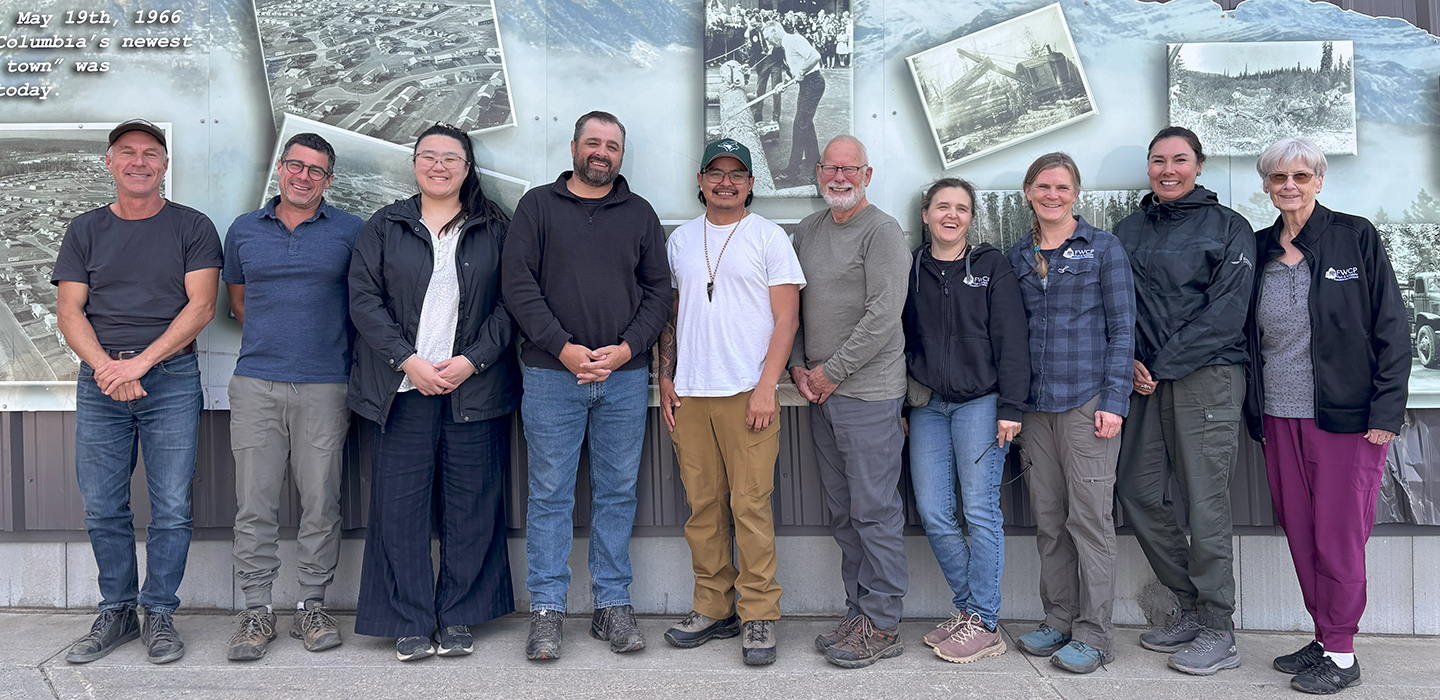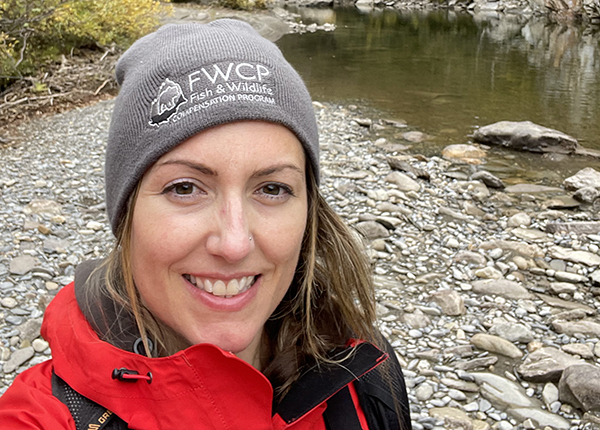Explore our Peace Region 2025–2026 projects
Use our interactive map to find out more about the 25 projects our Peace Region board approved for 2025–2026.
25 Fish & Wildlife Projects Approved 2025-2026
Our Peace Region board approved approximately $2.1 million for 25 projects in 2025-2026. The projects—eight fish and 17 wildlife—will be delivered by First Nations, communities, and businesses, as well as agencies, stewardship groups, and consultants.
The projects align with our priorities for riparian areas, wetlands, uplands, rivers, lakes, and reservoirs. The projects are diverse and support a wide range of fish species including bull trout, Arctic grayling, and kokanee, and wildlife such as wolverine, bats, caribou, Stone’s sheep, elk, and moose.
The 2025-2026 projects will, among other things, improve fish passage by removing hanging culverts, study changes in elk movements, and recover Endangered caribou herds with maternity penning and habitat restoration. Several projects respond to First Nations’ priorities related to moose and food sustainability, culturally important plants, and bull trout populations.
Read our Peace Region 2025–2026 project list, look at our project map, and scroll up to explore our interactive map.
Site C
Our Peace Region projects compensate for the W.A.C. Bennett and Peace Canyon dams. The FWCP works to fulfill BC Hydro’s applicable water licence obligations to address fish and wildlife impacts resulting from the construction of the W.A.C. Bennett and Peace Canyon dams.
The FWCP does not compensate for Site C impacts to fish and wildlife. Site C’s water licence obligations require BC Hydro to establish environmental monitoring, mitigation, and compensations programs. Under the water licence, BC Hydro will report to the water comptroller on these programs in ~2030. See Our Peace Region below for more information on Site C.
Annual report & outcomes
Our annual report for 2024-2025, along with our annual summary of project outcomes, are online!
Read how we allocated funding across our three regions to compensate from construction – footprint – impacts resulting from BC Hydro dams. Read our project outcomes document for a plain-language summary of project results.

Land securement grants
Our boards recognize the importance of securing critical habitats and we know that timing and opportunities can be hard to predict.
That's why we offer land securement grants all year. You can apply anytime.
Contact our region managers to learn more about how to apply for a land securement grant.

Action Plans
We have identified conservation priorities for fish and wildlife in each of our three regions: Coastal, Columbia and Peace. These priorities and recommended actions are reflected in a series of watershed and ecosystem-based action plans that vary by region.
These plans recommend specific projects and priorities, and guide our grant decisions. In our Peace Region, we fund projects that align with our four Peace Region ecosystem-based action plans. Be sure to read our Overview of Peace Region Action Plans.
Our Peace Region
A local Board made up of BC Hydro, the Province of B.C., Fisheries and Oceans Canada, First Nations and public stakeholders, guides the work of the FWCP and is responsible for approving all FWCP projects in our Peace Region.
Most fish and wildlife projects in FWCP’s Peace Region are funded through FWCP grants, but our Board may choose to direct projects and approve funding to address regional priorities. Read our annual report. See our Peace Region map.
A unique First Nations’ Working Group (FNWG) is actively involved in FWCP’s Peace Region. The FNWG is responsible for ensuring First Nations considerations and input are included in FWCP planning and projects.
The FWCP’s Peace Region compensates for fish and wildlife impacts resulting from construction of the W.A.C. Bennett and Peace Canyon dams. Site C is the third dam and generating station on the Peace River in northeast B.C. The project will provide 1,100 megawatts of capacity and about 5,100 gigawatt hours of energy each year to the province’s integrated electricity system.
Site C and FWCP have an interest in sharing information regarding active programs in order to identify overlaps or synergies. Current federal and provincial authorizations and conditional water licence obligations require BC Hydro to establish environmental monitoring, mitigation, and compensation programs to address pre- and post-construction impacts specified within the water licence project conditions. Under the water licence, after five years of dam operation (~2030), BC Hydro is to provide the Water Comptroller with an assessment of the adequacy of the mitigation and monitoring programs for those conditions within the water licence and submit a report. The Water Comptroller will review the submission and may direct additional programs if mitigation and monitoring is determined to be inadequate to satisfy the intent of the condition. Learn more about Site C’s environmental programs.
Stay up to date with the latest news from our Peace Region with our regional e-letter.
Working With Local First Nations
Our First Nations Working Group (FNWG) was established in 2012 through a Memorandum of Understanding signed by Doig River, Kwadacha, McLeod Lake, Nak’azdli, Prophet River, Saulteau, the Treaty 8 Tribal Association, Tsay Keh Dene, and West Moberly First Nations.
The FNWG ensures First Nations’ considerations and input are included in all aspects of our strategic planning, annual operating plans, project review, approval and initiation, and capacity-building.
To ensure early First Nation engagement in all FWCP projects, each grant applicant must submit a mandatory Notice of Intent (NOI) form prior to their grant application. The NOI helps grant-seekers identify contacts and incorporate First Nations input and recommendations into grant applications and projects. Contact the Regional Manager for more details.




